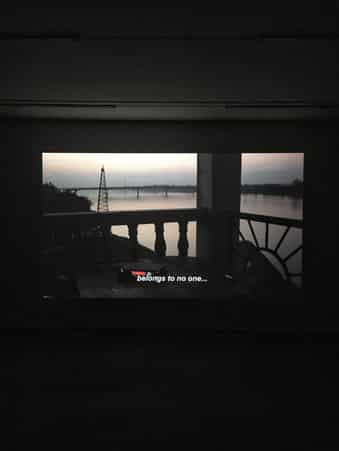Bangkok-native and internationally influential film producer and artist, Apichatpong Weerasethakul, has completely reshaped the conceptions of contemporary art to that of his own, recently releasing his exhibition “The Serenity of Madness” at Chiang Mai’s newly built Maiiam Contemporary Art Museum. With short-films, prints, 3-D artwork and a variety of other platforms that touch on his recollections and experiences with spirituality, memory and class, Apichatpong’s world-class collection is one not to be missed.
Apichatpong is a multi-talented artist who co-found production company, Kick the Machine in 1999. Since then, Kick the Machine films have made their mark in some of the world’s biggest film festivals, showcasing features that address sexuality, race, nature, etc. through experimental and innovative form. Maiiam Contemporary Art Museum chose to reveal “The Serenity of Madness”, a collaboration of Apichatpong’s solo work and Kick the Machine’s, for their opening exhibit.
I had the pleasure of spending a workday going about Maiiam’s unique yet simply designed interior and observing, or I should say experiencing, “The Serenity of Madness”. Contrasting with the spacious, naturally-lit foyer, the exhibition offered an intimate feeling with doors that isolated Apichatpong’s work from the heavy commotion that loomed in the café and lobby. As I walked through the dark-space, I relied on the light from each projector to guide me from one inspiring room to the next. I couldn’t help but notice the craft in his work. Apichatpong took his work away from conveying a specific message to, rather, reliving scenarios and memories by stretching the boundaries of cinematography; as opposed to being told what to think, Apichatpong leaves room for his audience to relate to his work in their own way. Ashes, one of the films on display, is Apichatpong’s attempt at recreating one of his dreams as he tries to pull the colours, sounds and events that he can gather from his memory. Throughout the film, Apichatpong struggles to remember these broken mental images, brilliantly shown through his camerawork using an analogue moviemaker that only shoots 144 frames per role. The swift and glitchy LomoKino feels like an authentic portrayal of what it’s like to resurrect memories and dreams 

Apichatpong’s exhibition isn’t the only thing to take away from this summer’s art scene; Maiiam Contemporary Art Museum, which opened its doors early this July, is a huge step for Chiang Mai’s quiet yet vibrant art culture. The mirrored front façade is art itself, adding aesthetic to community around it, while the inside offers a beautiful space to host concerts, community events and art exhibitions for both acclaimed and aspiring artists. A grand museum like Maiiam places Chiang Mai on the map as a top art hub in Southeast Asia, being a gallery of inspiration for up-and-coming local artists.
“I just hope it has an impact locally. I am happy to have a different place to go rather than shopping malls. I saw students and young kids at the museum and I thought, ‘Can I count on you to make this country more interesting?’”
